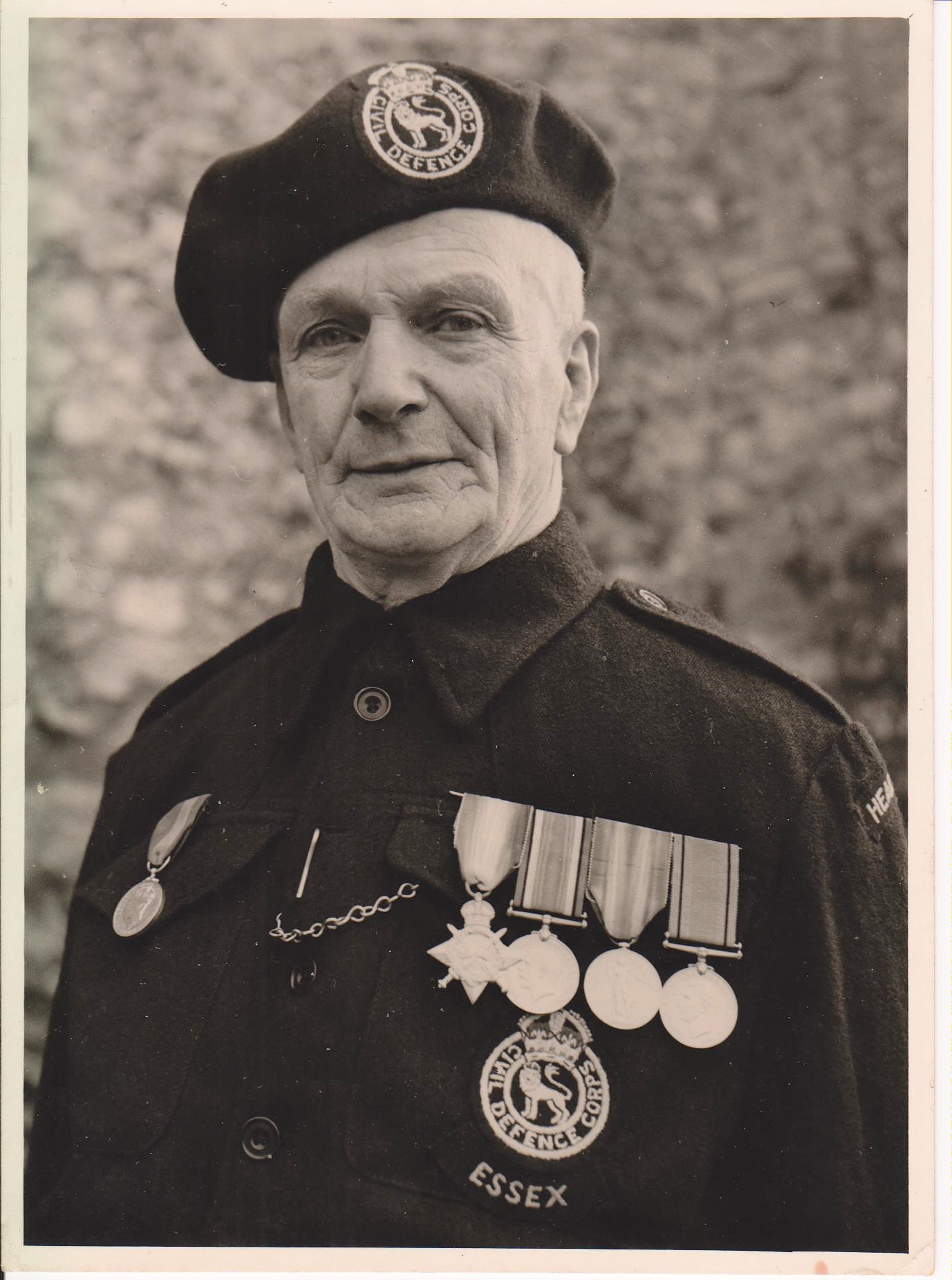
Deirdre Tyler of Richmond explained the story of Ernest (Ernie) John Tyler to us at one of our drop-in days.
Ernie was born on 23 April 1880 in Edmonton, London. He served in the Royal Engineers 1914-1919, mainly with 29 Division and saw active service in the Dardanelles and the Somme. He embarked for his first active service on 2 June 1915.
He was one of the few Royal Engineers aboard the “S.S. River Clyde” in 1915, when it was ill-fatedly beached at “V” beach, Cape Helles, Gallipoli, under the guns of the defenders. Six VC’s were subsequently awarded to the ship’s crew for their courage in maintaining the bridge and rescuing the wounded from the beach.
Ernie subsequently spent time in Egypt and then at the Home Depot. He suffered from typhoid or enteric fever and as a result was granted home furlough from 29 February to 19 April 1916. He also caught malaria, being classed B,ii for six months as a result. He was awarded a Good Conduct Badge on 18 June 1917.
Ernie lost two of his brothers in the Great War, one at Gallipoli, and another at sea.
After the First World War, Ernie returned to his work in the postal service and was in charge of the first telegraph message motor cycle delivery riders.
He had six children who survived into adulthood. Five served their country in the forces; four in the second world war and one post war. Bernard, his eldest son, was killed in action at Anzio, where he is buried.
In WWII Ernie served as an ARP in the Heavy Rescue Team in the London Blitz. He was involved with the Civil Defence Corps, and was a keen life-long supporter of the Royal British Legion from its inception. He held several tenures as Chairman of the Benfleet Branch in Essex. He died in 1967.
This commemoration is dedicated to the service of Ernest J. Tyler, and to the service and ultimate personal sacrifice of two of his brothers, and his son Bernard E. Tyler, WWII (Anzio).
Posted on behalf of Ernest Tyler’s son, Major (retd) Royce Tyler, MBE, ex Vice Chairman of the Royal British Legion, Richmond Branch, and former dedicated volunteer at the Green Howards Regimental museum.
Deidre P.A. Tyler, daughter of Royce Tyler, both proudly, of Richmond.

Ernie’s medal card
Explore more memories from the ribbon
-
George Johnson
Edith Purkiss wanted to tell us about her father’s war service. George Johnson Junior was a Richmond lad whose father, also called George had seen active service in Egypt with the West Yorkshire Regiment. The 1911 census shows George Jnr was working as a groom and living in Richmond at 20 Bargate along with his parents and siblings. George Jnr enlisted into the Yorkshire Regiment on 3rd September 1914. Having survived the First Battle of the Somme unscathed he was later injured at the Second Battle of the Somme in 1918. He lay in no man’s land for a considerable amount of time, wounded, until he was carried to safety by Mr Buchanan who later became manager of Timothy Whites & Taylors chemist shop (now Boots). George was severely wounded in his right leg and left arm, and was sent to a convalescent hospital in Sheffield to recover. His wounds were so severe that he was discharged, aged 24 years on 26th June 1918. Although he survived, George suffered from ill health due as a result of his wounds all his life. Ironically, he was finally granted a war pension of the day he died, 15th June 1959.
-
Henry Parker
Henry Parker In October 2015 the Green Howards Museum was contacted by the Ministry of Defence’s Joint Casualty and Compassionate Centre (JCCC). Human remains had been found in a field to the north- east of the village of Martinpuich on the Somme. The JCCC wanted to know if we could do anything to help identify this unknown soldier. We looked at events around Martinpuich between 25 and 27 September 1916. 77 men were lost, whilst an additional 319 Officers and Other Ranks were either wounded, or listed as ‘missing’. The remains could have belonged to any one of a potential 396 men. Through a process of elimination using research and archive information, we produced a shortlist of 12. To get any further, science needed to play its part. The Forensic team from JCCC collected DNA from the femur of the remains. DNA was taken from the next of kin of our shortlisted missing soldiers who had agreed to take part in the process. The remains were positively identified as those of 3183 Private Henry Parker, born 29th September 1893 in Weavererthorpe, in the Yorkshire Wolds. He was killed in action, aged 22, during the Battle of the Somme on 26 September 1916. Shoulder badges, uniform buttons, a belt buckle and clip, bullet and cut throet razor were found with the remains of Private Henry Parker – these are now on display at the museum. He was reburied with full military honours in Warlencourt Cemetary in France on 17th May 2017….
-
Bill Moore
At over six feet tall and 22 stone, Bill Moore must have been an impressive sight! While originally from Wells, he made his way to the north of England with his travelling boxing booth. For a time he set up at Darlington, but at the outbreak of war in 1914, Moore decided to move his show to Catterick Camp. The ‘Tommies’ must have enjoyed what he had to offer. Boxing matches even involved Annie, his daughter and a captive bear which on one occasion escaped onto local moorland. Military Police eventually tracked the animal down, much to the relief of the locals.
